What are Closed Syllables & How to Teach Them
This post may contain affiliate links. As an Amazon affiliate, we earn from qualifying purchases. See our disclosure policy.
A solid understanding of closed syllables will unlock the magic of reading longer words for students, so it’s so important to teach them right! Now you might be wondering, “What are closed syllables?” Well, we’re here to explain all about what closed syllables are and how to teach them, plus give you 3 free printable worksheets to use with students.
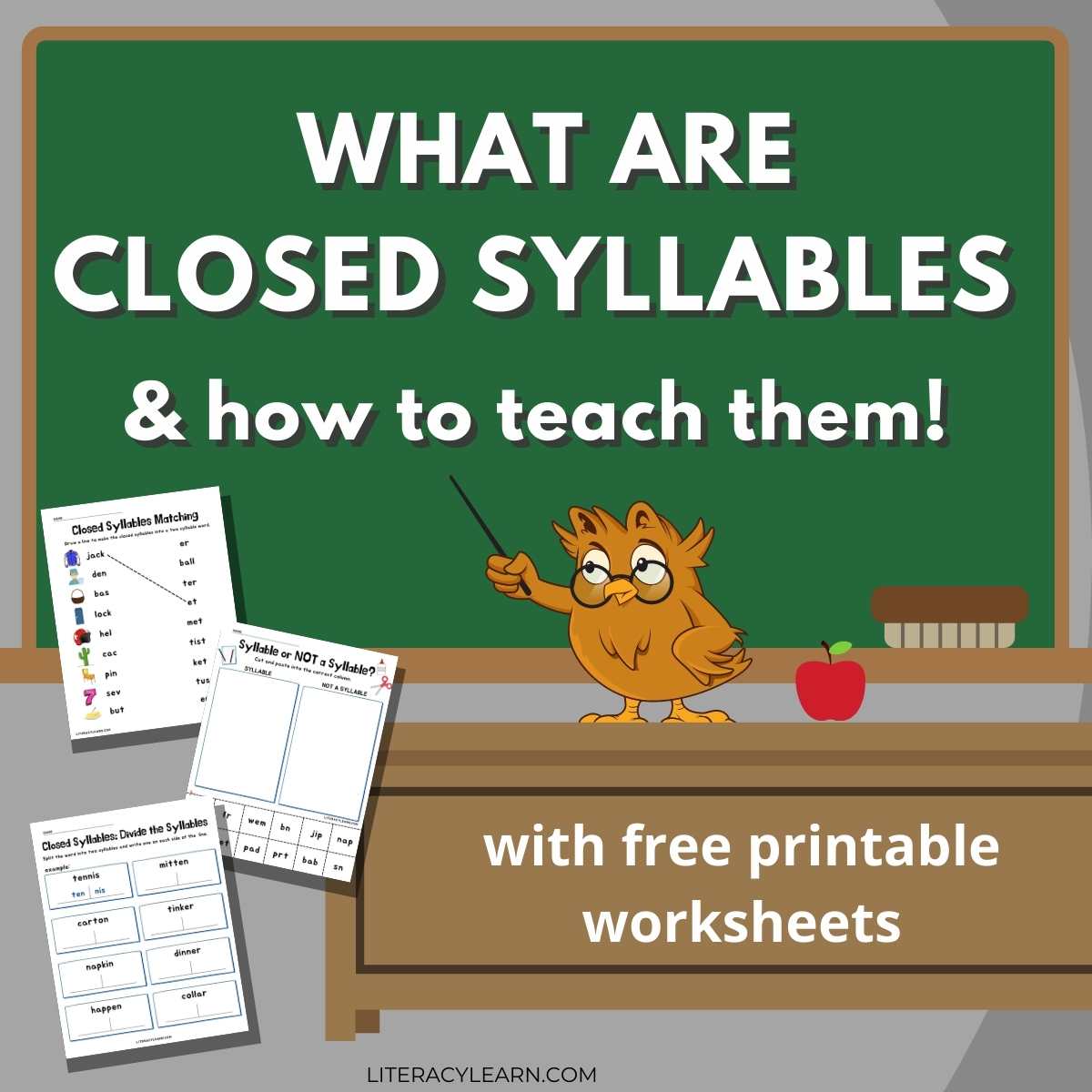
Closed Syllable Definition
Closed syllables are syllables that contain one vowel sound, and that vowel is ‘closed in’ by a consonant, causing the vowel to say its short sound. That’s why they are called “closed” syllables.
- Most CVC words (consonant, vowel, consonant) are examples of closed syllables – e.g. cat.
- Closed syllables can also begin with a vowel and end with a consonant – e.g. it.
- Digraphs can also be used to ‘close’ in a vowel and make it say its short sound – e.g. ash.
Examples:
- hat
- pen
- up
- jam
- lip
- in
- fish
See how all of these words have a consonant closing in the vowel, making the vowel say its short sound? That means it’s a closed syllable!
Of the six syllable types, closed syllables are the first and most important syllable type to teach to children.
🙋🏽♀️Did you know? In a study by M. Stanback (1992), thousands of English words were analyzed and it was determined that about 43% of syllables in all English words are closed syllables.
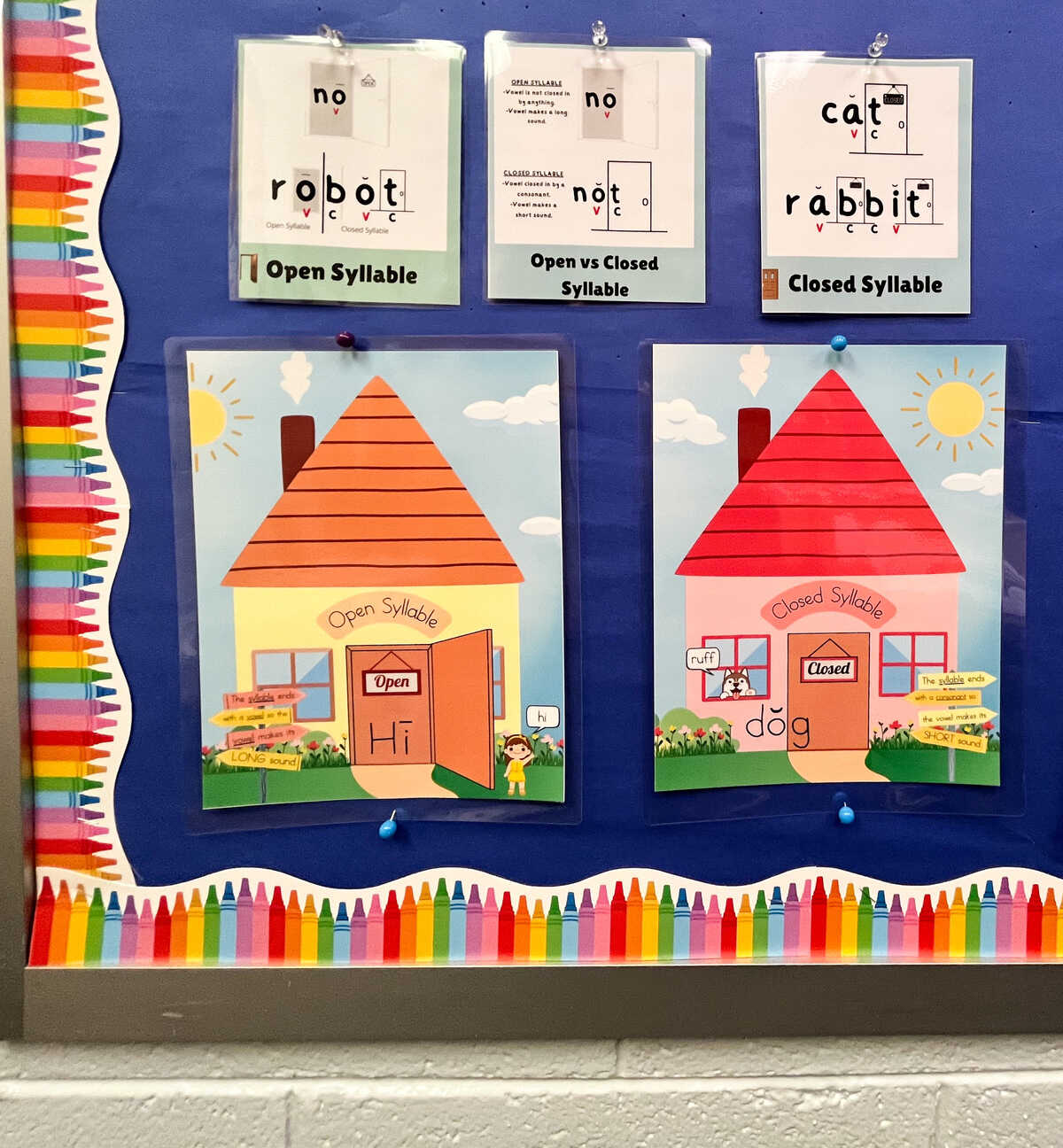
How to Teach Closed Syllables
Below we discuss some tips for teaching closed syllables, as well as descriptions of the practice worksheets we’re providing for free!
1. Background Vocabulary
First, children need to know these words and their meanings: vowel, consonant, short vowel, long vowel, and syllable. These terms are essential for structured literacy instruction (OG).
Even if you’re teaching letters and sounds to your pre-k and kindergarten students, be sure to use these academic terms!
If your students already know their letters and sounds, then quickly teach and review these terms and their meanings and provide examples, using anchor charts as well. They should catch on quickly!
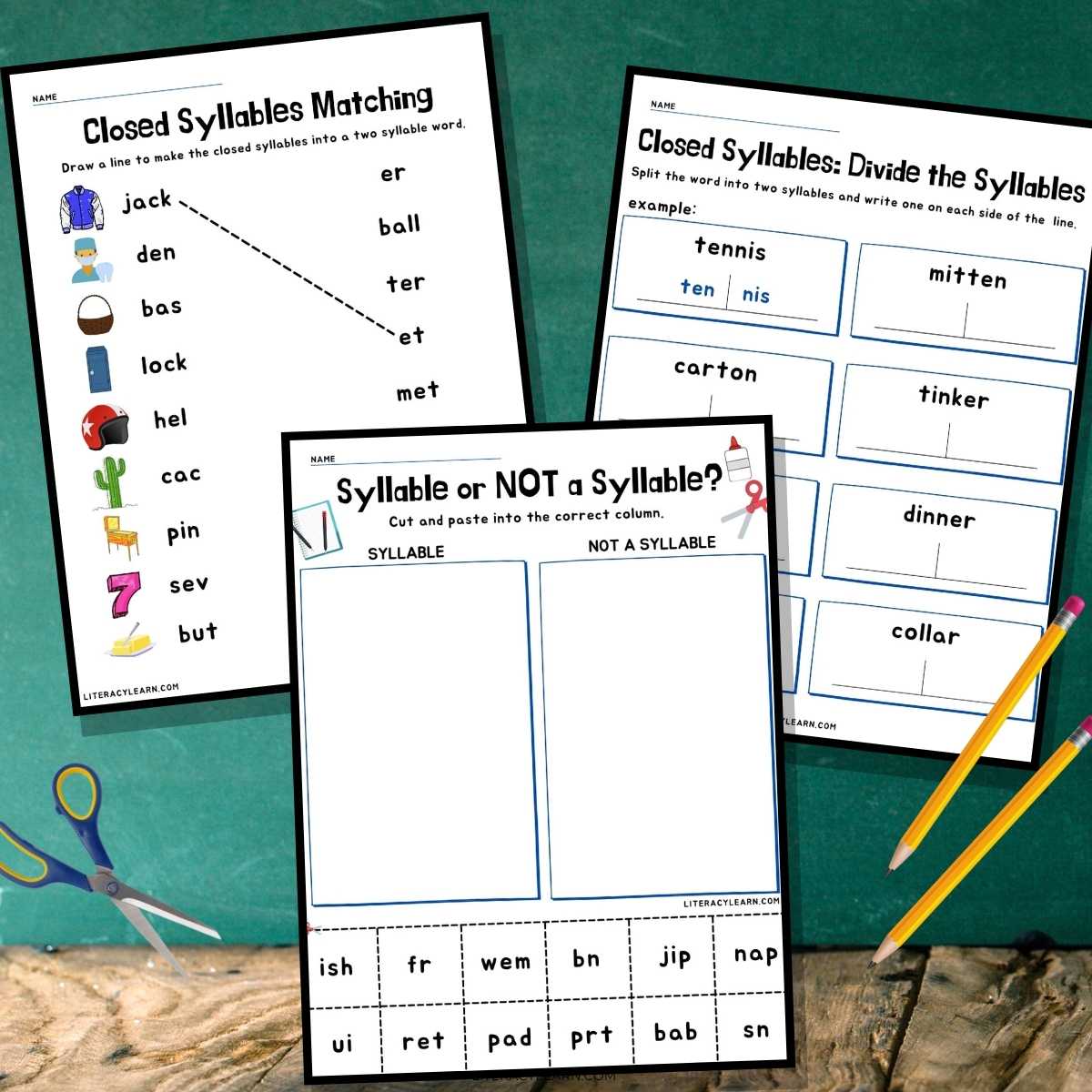
2. Meaning
Next, explicitly teach what a closed syllable is: A vowel closed in by the consonant, making the vowel say its short sound. Teach and model using closed-syllable words.
Remember to point out that every syllable must have a vowel. Use our list of of CVC words for teaching closed syllables.
Use Real and Nonsense Words
When teaching closed syllables, be sure to use real and nonsense words. Children will need to be familiar with nonsense closed syllables, because they will see many of them in multisyllable words.
Think about the word ‘volcanic.’ This is a word that adults would easily recognize and read automatically, but children will need a strategy for decoding or spelling this word. The word ‘volcanic‘ is made up of three closed syllables:
vol – can – ic
This word is made up of three closed syllables, two of which are nonsense syllables. Knowing the rule (that a consonant closes in a vowel and makes it say its short sound) enables children to break the word apart into syllables, reading each syllable type correctly.
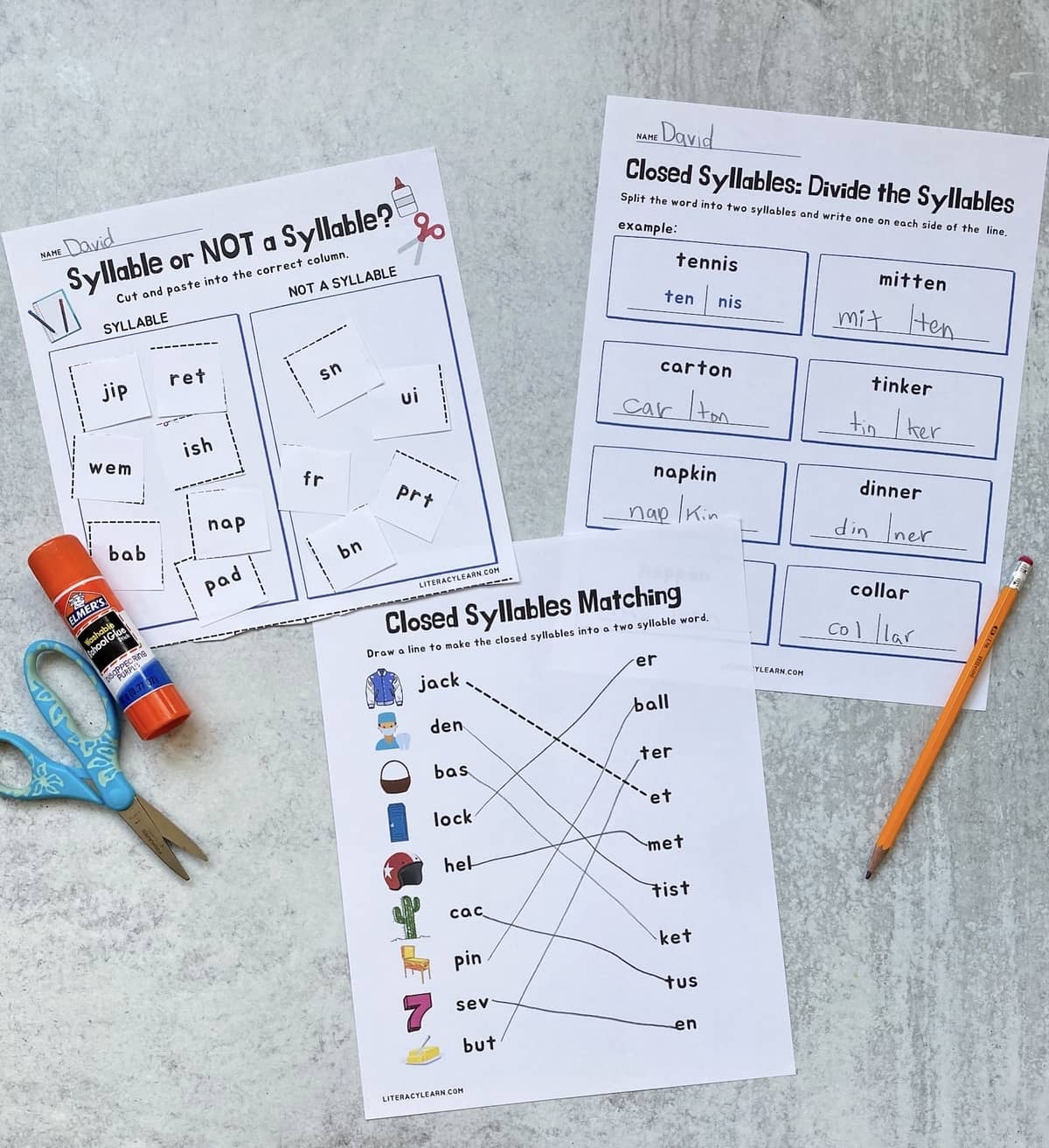
3. Practice
We’re providing three free worksheets for practice!
Syllable Sort
We love this Syllable vs. Not a Syllable Sorting worksheet! This activity will help students locate vowels within words and syllables. Then, they’ll practice reading both real words and nonsense words as they apply the rule of closed syllables.
👉 Be sure the child is saying the short sound of the vowel for the closed syllable words. This will tell you whether they understand the concept of closed syllables or whether additional teaching and modeling is needed.
Syllable Division
After kids are successful reading one-syllable closed-syllable words with accuracy, it’s time to move on to longer words!
This is the perfect time to show kids that longer words are not scary. They just need to be taught that most words are made up of smaller word parts, or syllables. You’ll see lightbulbs go off! 💡
We recommend introducing this using VC/CV words, sometimes referred to as Rabbit words. It’s important to note that this is the time you’ll also want to introduce the schwa sound, because many Rabbit words will include a schwa sound in the unstressed syllable.
We’ve designed our free printable practice syllable division using VC/CV words with the same middle consonant.
Syllable Matching
Using this worksheet, kids will be tasked with reading many real and nonsense syllables to form one real word. Kids will draw a line from the first syllable to the second syllable, being sure the word they create matches the picture.
Conclusion
Teaching syllable types helps kids to accurately decode and spell words. It gives children a valuable tool in their toolbox as they apply syllabication rules to unknown words, which is especially helpful as words become longer.
Once your students have demonstrated an understanding of closed syllables, including 2 syllable words made up of closed syllables, you can move on to the next syllable type: open syllables with long vowels.
👉🏽Read our post “All About Open and Closed Syllables,” and use our free multisensory activity for teaching open and closed syllables.
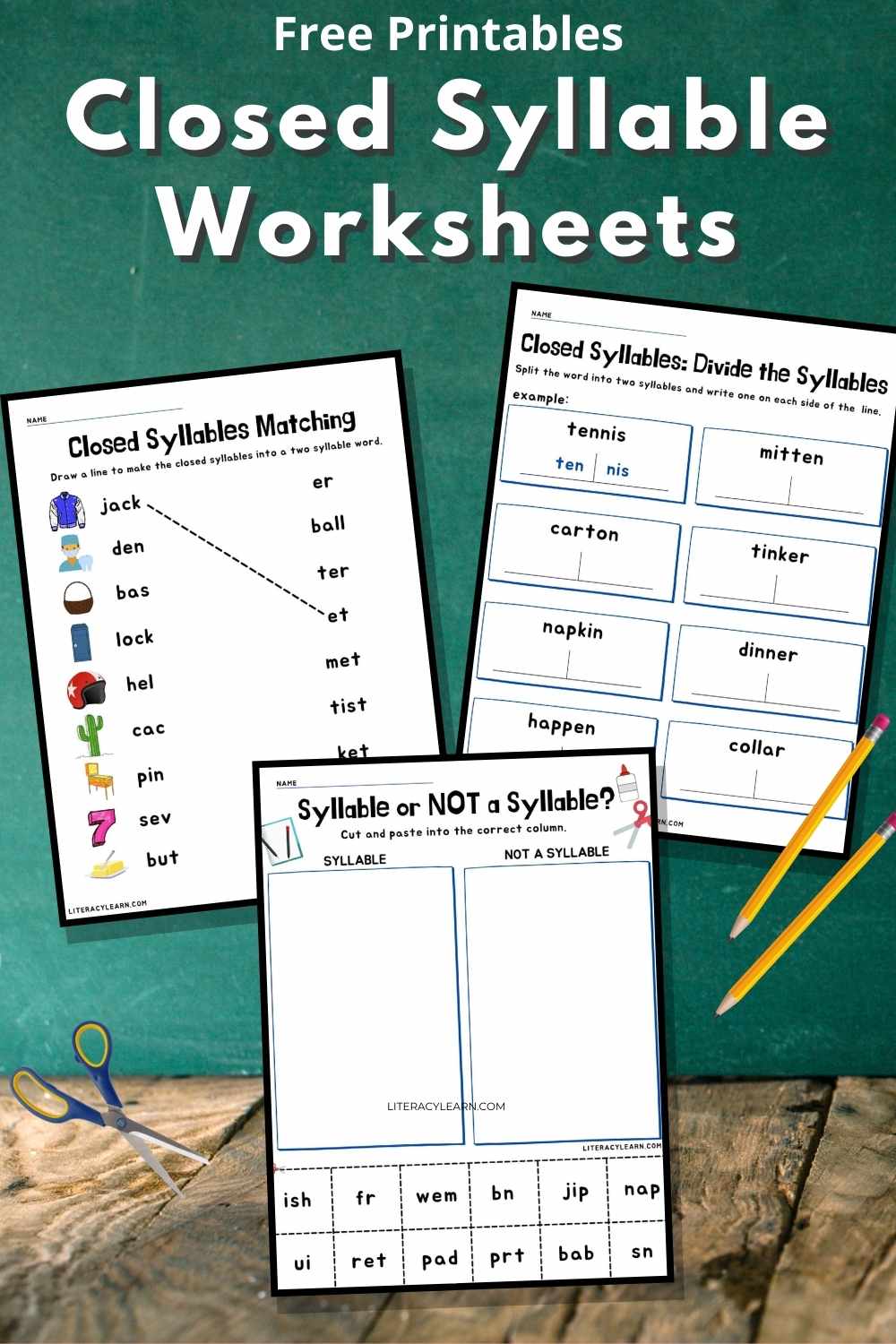
Recommended Resources
Download & Print
Questions, concerns or feedback? Drop a comment below or tag us on Instagram @literacylearn!
DOWNLOAD TERMS: All of our resources and printables are designed for personal use only in homes and classrooms. Each teacher must download his or her own copy. To share with others, please use the social share links provided or distribute the link to the blog post so others can download their own copies. Please do not save our files to a shared drive, reproduce our resources on the web, or make photocopies for anyone besides your own students. Your support in this allows us to keep making free resources for everyone! Please see our Creative Credits page for information about the licensed clipart we use. If you have any questions or concerns regarding our terms, please email us. Thank you!
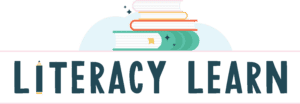
Thank so much for your worksheets and the steps guideline on the literacy. Honestly, I taught the CVC words to my kids but did not no what to introduce next. My kids enjoy going through the worksheets.
Michelle,
We are so happy you are building on CVC words and now introducing closed syllables to your kids. Let us know how it goes!
Katie & Laura
Your worksheets look great! I love the spelling game, especially for red/learned words! Looking at your closed syllable worksheets, I noticed you have some r-controlled syllables mixed in. Most kids learn r-controlled separately from simple closed syllables. It may be more useful for teachers and tutors to keep syllable types separated. Just a thought. Your ideas are creative. I like them, otherwise.
Amy,
Thank you! Your positive feedback is so encouraging. We hope you keep coming back as we are adding new resources weekly! We just updated the worksheets based on this feedback about r-controlled syllables!
-Katie and Laura
First of all, I love your resources! Thank you!
I am having difficulty opening the closed syllable pdf.
Thanks, Jessica
Thank you for your kind words and support! I am sorry you’re having trouble with the link. I will email the worksheets to you directly.
Absolutely love your materials with all the color!! I have been trained in Orton-Gillingham and love your worksheets for both Closed Syllables as well as Silent Jumping E! Have you put your materials on Teachers Pay Teachers? I found you by Googling “silent e worksheets.”
Thanks again for such great doable worksheets!! Have a great rest of your week!
Susan Kydd 😊☀️📚
Hi Susan! Thank you so much for your kind words and feedback about our resources. We aren’t planning to charge for our resources, so we’re keeping all of everything on our site instead of TPT. We’re constantly adding new freebies here, so I hope you’ll subscribe for updates! 🙂 -Katie & Laura
How can I obtain the closed syllable matching worksheet?
Hi Maryann,
All of our resources are free. Just scroll to the section called “Download & Print” and you can download the printable from there. If you have specific questions, please send us an email at literacylearnblog@gmail.com We hope this helps!
Katie and Laura